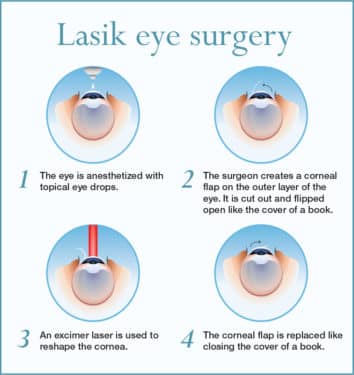Exactly How Does SMILE Eye Surgery Contrast To LASIK And PRK?
Exactly How Does SMILE Eye Surgery Contrast To LASIK And PRK?
Blog Article
Developed By-Munksgaard Tang
If you have actually been thinking about SMILE eye surgical procedure, you might ask yourself how it compares to LASIK and PRK. Each procedure has its own set of advantages and factors to consider. From quicker recovery times to potential dangers, there are essential distinctions you must know before choosing. Understanding these differences will help you make an educated choice that lines up with your particular needs and expectations. Curious to know even more about just how these procedures contrast carefully? Keep discovering to acquire a detailed understanding of SMILE, LASIK, and PRK.
SMILE Eye Surgical Treatment Review
If you're considering SMILE eye surgery, you'll locate it to be a minimally intrusive procedure with a fast recovery time. During SMILE (Small Laceration Lenticule Removal), a laser is used to develop a tiny, accurate laceration in the cornea to get rid of a small piece of tissue, improving it to remedy your vision. This varies from LASIK, where a flap is produced, and PRK, where the external layer of the cornea is totally gotten rid of.
One of the essential benefits of SMILE is its minimally intrusive nature, causing a faster recovery process and less discomfort post-surgery. The recovery time for SMILE is fairly quick, with numerous patients experiencing improved vision within a day or 2. This makes it a prominent selection for those seeking a convenient and efficient vision improvement treatment. Furthermore, SMILE has been revealed to have a lower risk of completely dry eye syndrome compared to LASIK, making it a positive option for individuals worried concerning this prospective adverse effects.
Distinctions In Between SMILE, LASIK, and PRK
When contrasting SMILE, LASIK, and PRK eye surgical procedures, it's important to understand the unique strategies made use of in each treatment for vision modification.
SMILE (Little Laceration Lenticule Removal) is a minimally invasive treatment that includes producing a little laceration to extract a lenticule from the cornea, improving it to deal with vision.
LASIK (Laser-Assisted Sitting Keratomileusis) involves producing a thin flap on the cornea, utilizing a laser to reshape the underlying cells, and after that rearranging the flap.
PRK (Photorefractive Keratectomy) gets rid of the outer layer of the cornea before reshaping the cells with a laser.
The main distinction depends on the method the cornea is accessed and treated. SMILE is flapless, making it an excellent option for individuals with thin corneas or those associated with contact sports. LASIK supplies fast aesthetic healing because of the flap creation, however it may present a greater risk of flap-related difficulties. PRK, although having a much longer recuperation duration, avoids flap-related concerns altogether.
Comprehending https://gunnerhbcwr.smblogsites.com/26537126/dive-into-the-elaborate-world-of-sophisticated-cataract-surgery-where-safety-and-security-and-efficiency-take-spotlight-untangling-an-engaging-narrative-of-technology-and-accuracy is vital in choosing the most suitable procedure for your vision improvement requirements.
Pros and Cons Contrast
To review the advantages and drawbacks of SMILE, LASIK, and PRK eye surgical procedures, it's vital to take into consideration the details benefits and prospective constraints of each treatment. SMILE surgery provides the advantage of a minimally invasive treatment, with a smaller sized incision and potentially quicker recuperation time contrasted to LASIK and PRK. It additionally decreases the risk of completely dry eye post-surgery, a common adverse effects of LASIK. Nonetheless, after cataract surgery eye drops may have constraints in dealing with greater degrees of nearsightedness or astigmatism compared to LASIK.
LASIK surgical procedure offers rapid aesthetic healing and very little pain during the treatment. It's highly effective in treating a wide variety of refractive mistakes, consisting of nearsightedness, hyperopia, and astigmatism. Yet, LASIK lugs a danger of flap issues, which can affect the corneal structure.
PRK eye surgical procedure, while not as popular as LASIK, avoids developing a corneal flap, minimizing the danger of flap-related issues. It's suitable for clients with thin corneas or irregular corneal surfaces. However, PRK has a much longer healing time and might involve much more pain during the recovery process.
Conclusion
So, when it pertains to picking between SMILE, LASIK, and PRK, think of it like selecting the excellent pair of shoes. SMILE is like a smooth, comfortable set of tennis shoes - quick and easy.
LASIK is more like trendy high heels - flashy and quick, however with some prospective dangers.
PRK is like strong hiking boots - trustworthy and sturdy, yet calling for a little bit even more time and effort.
Ultimately, cataract surgery recovery time off work depends on your private demands and choices.
